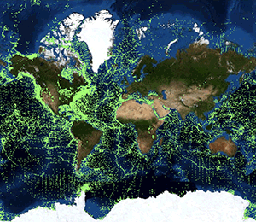Index to Marine and Lacustrine Geological Samples (IMLGS)
Access to rock and sediment cores, dredges, and grabs
from the ocean floor and lakebeds
(http://seabedsamples.org)
What is the IMLGS?
The Index to Marine and Lacustrine Geological Samples is a tool to help scientists locate and obtain geologic material from sea floor and lakebed cores, grabs, and dredges archived by participating institutions around the world.
Sample material is available directly from each repository. Before proposing research on any sample, please contact the curator for sample condition and availability.
Data Credits:
Data are prepared by the partner sample repositories whose collections are searchable through the IMLGS.
The Curators' Consortium guides the database, maintained on behalf of the group by NOAA, since 1977.
Some U.S. repositories receive funding from NSF to prepare data for the Index. For more information, see the NSF Division of Ocean Sciences Data and Sample Policy.
How to Cite:
Curators of Marine and Lacustrine Geological Samples Consortium. The Index to Marine and Lacustrine Geological Samples (IMLGS). NOAA National Centers for Environmental Information. doi:10.7289/V5H41PB8 [date of access].
More about the IMLGS
Data include basic collection and storage information. Lithology, texture, age, principal investigator, province, weathering, metamorphism, glass remarks, and descriptive data are included for some samples, at the discretion of the curator.
Several thousand samples in the Index also link to the NSF supported System for Solid Earth SAmple Registration (SESAR) by IGSN, the Marine Geoscience Data System (MGDS) and PetDB.
The Index is endorsed by the Intergovernmental Oceanographic Commission, Committee on International Oceanographic Data and Information Exchange (IODE-XIV.2).
Look for data from the Index to Marine and Lacustrine Geological Samples, and for data digitized under the NOAA Climate Database Modernization Program (CDMP), in the NSF-funded GeoMapApp,
and in the GRID-Arendal Continental Shelf Programme.
|



